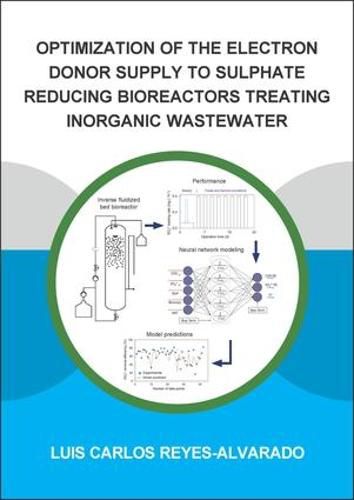Readings Newsletter
Become a Readings Member to make your shopping experience even easier.
Sign in or sign up for free!
You’re not far away from qualifying for FREE standard shipping within Australia
You’ve qualified for FREE standard shipping within Australia
The cart is loading…






The main objective of this research was to optimize the electron donor supply in sulphate reducing bioreactors treating sulphate rich wastewater. Two types of electron donor were tested: lactate and slow release electron donors such as carbohydrate based polymers and lignocellulosic biowastes. Biological sulphate reduction was evaluated in different bioreactor configurations: the inverse fluidized bed, sequencing batch and batch reactors. The reactors were tested under steady-state, high-rate and transient-state feeding conditions of electron donor and acceptor, respectively. The results showed that the inverse fluidized bed reactor configuration is robust and resilient to transient and high-rate feeding conditions at a hydraulic retention time as low as 0.125 d. The biological sulphate reduction was limited by the COD:sulphate ratio (< 1.7). The results from artificial neural network modelling showed that the influent sulphate concentrations synergistically affected the COD removal efficiency and the sulphide production. Concerning the role of electron donors, the slow release electron donors allowed a biological sulphate reduction > 82% either using carbohydrate based polymers or lignocellulosic bio-wastes, in batch bioreactors. The biological sulphate reduction was limited by the hydrolysis-fermentation rate and by the complexity of the slow release electron donors.
$9.00 standard shipping within Australia
FREE standard shipping within Australia for orders over $100.00
Express & International shipping calculated at checkout
The main objective of this research was to optimize the electron donor supply in sulphate reducing bioreactors treating sulphate rich wastewater. Two types of electron donor were tested: lactate and slow release electron donors such as carbohydrate based polymers and lignocellulosic biowastes. Biological sulphate reduction was evaluated in different bioreactor configurations: the inverse fluidized bed, sequencing batch and batch reactors. The reactors were tested under steady-state, high-rate and transient-state feeding conditions of electron donor and acceptor, respectively. The results showed that the inverse fluidized bed reactor configuration is robust and resilient to transient and high-rate feeding conditions at a hydraulic retention time as low as 0.125 d. The biological sulphate reduction was limited by the COD:sulphate ratio (< 1.7). The results from artificial neural network modelling showed that the influent sulphate concentrations synergistically affected the COD removal efficiency and the sulphide production. Concerning the role of electron donors, the slow release electron donors allowed a biological sulphate reduction > 82% either using carbohydrate based polymers or lignocellulosic bio-wastes, in batch bioreactors. The biological sulphate reduction was limited by the hydrolysis-fermentation rate and by the complexity of the slow release electron donors.